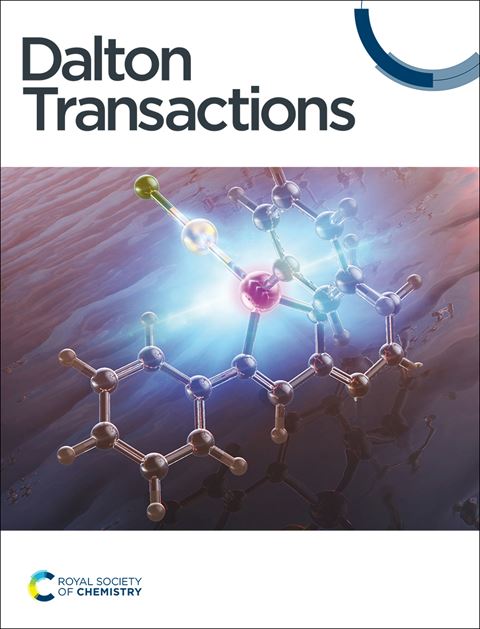Lanthanide-dependent photoluminescence and thin film fabrication of host CaWO4 micro-materials for potential indoor plant growth applications
IF 3.5
3区 化学
Q2 CHEMISTRY, INORGANIC & NUCLEAR
引用次数: 0
Abstract
A set of scheelite (CaWO4, CWO) doped samples with formula Ca1-2xLnxNaxWO4 (x = 0 and 0.1; Ln = Eu, Tb and Gd) (Eu@CWO, Tb@CWO and Gd@CWO) and doped phases with combinations LnxLn’y= Eu0.05Tb0.05, Eu0.05Gd0.05, Tb0.05Gd0.05 (Eu,Tb@CWO, Eu,Gd@CWO and Tb,Gd@CWO) and Eu0.033Tb0.033Gd0.033 (Eu,Tb,Gd@CWO) were prepared by a modified four-steps sol-gel method followed by calcination at mild temperature. The solids were characterized by X-ray powder diffraction (XRPD) and scanning-electron microscopy (SEM). An in-depth analysis of the structure and the impact of the synthesis approach on crystallite shape and size was carried out using Rietveld refinements. Besides, the solid-state photoluminescence was studied in terms of excitation, emission 4f-4f* transitions, lifetimes (obs), radiative and non-radiative constants (kr and knrad), energy transfer migration analysis and europium-quantum yields. Finally, the Eu-containing CWO samples were selected as a potential emitter device constructed by spin-coating technique giving rise a homogeneous coatings onto squared glass substrates. These results are promising for the desing and construction of devices based on tungstate micro-sized materials with emission properties and potential applications in plant cultivation LEDs, sensing, photocatalysis and solar cells.求助全文
约1分钟内获得全文
求助全文
来源期刊

Dalton Transactions
化学-无机化学与核化学
CiteScore
6.60
自引率
7.50%
发文量
1832
审稿时长
1.5 months
期刊介绍:
Dalton Transactions is a journal for all areas of inorganic chemistry, which encompasses the organometallic, bioinorganic and materials chemistry of the elements, with applications including synthesis, catalysis, energy conversion/storage, electrical devices and medicine. Dalton Transactions welcomes high-quality, original submissions in all of these areas and more, where the advancement of knowledge in inorganic chemistry is significant.
 求助内容:
求助内容: 应助结果提醒方式:
应助结果提醒方式:


